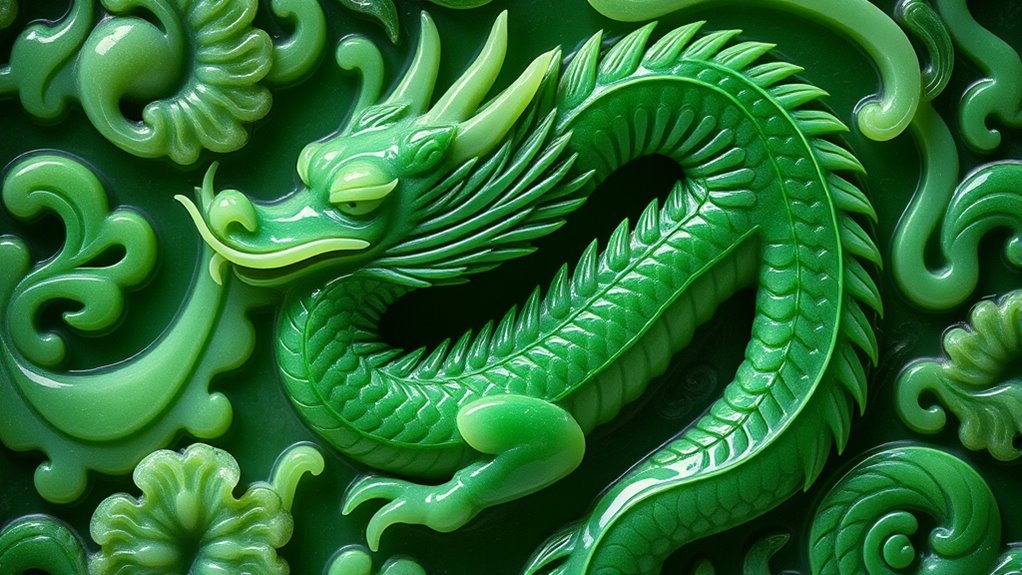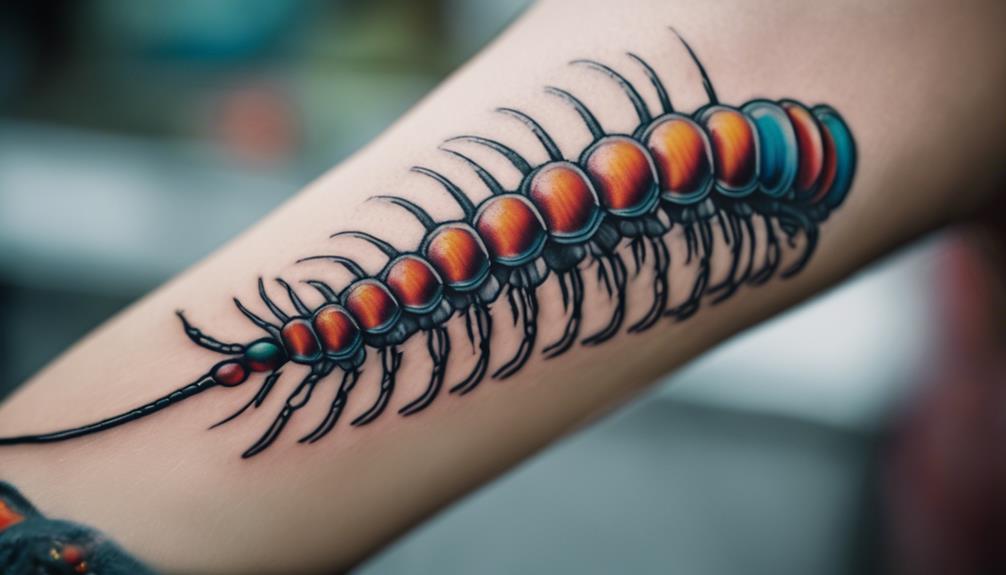Dragon motifs in Asian art symbolize power, protection, and spiritual energy. You’ll see these images embodying blessings of good fortune, health, and prosperity, often depicted as benevolent guardians of water, air, and sacred spaces. They reflect deep cultural values and mythological origins, representing divine authority and harmony with nature. Their intricate designs connect to concepts like qi and the celestial domain. Continuing to explore reveals how these symbols remain crucial to Asian cultural identity today.
Key Takeaways
- Dragon motifs symbolize power, protection, and spiritual energy, reflecting deep cultural values in Asian art.
- They often represent benevolence, good fortune, health, and prosperity in mythological and artistic depictions.
- Used as protectors of sacred spaces, dragons guard temples and palaces against evil spirits.
- As symbols of qi (vital energy), dragons embody vitality, harmony, and divine connection in Asian philosophy.
- Their enduring presence reflects cultural identity, mythological origins, and spiritual symbolism across centuries.

Dragon motifs hold a prominent place in Asian art, symbolizing power, protection, and spiritual energy. When you see these intricate designs, you’re witnessing more than just decorative images; you’re glimpsing a reflection of deep cultural symbolism that spans centuries. These dragons often appear in paintings, sculptures, textiles, and architecture, each carrying layers of meaning rooted in their mythological origins. Understanding these origins helps you appreciate why dragons are revered and how they embody essential values across Asian societies.
Dragon motifs in Asian art embody power, protection, and spiritual energy rooted in deep cultural and mythological symbolism.
In many Asian cultures, dragons are considered benevolent creatures that bring good fortune, health, and prosperity. Unlike the often fearsome Western dragons, these mythological origins depict them as wise and kind, guardians of natural elements like water and air. This mythological background influences their portrayal in art—long, serpentine bodies, flowing whiskers, and claws that symbolize strength and authority. Such features aren’t arbitrary; they derive from ancient stories where dragons controlled the weather, bringing rain to crops or warding off evil spirits. Their mythological origins serve as a foundation for their ongoing symbolism, connecting art to stories of divine power and harmony with nature.
You’ll notice that dragon motifs often serve as protectors in temples and palaces, reinforcing their role in cultural symbolism. They’re believed to ward off evil spirits and safeguard sacred spaces. This protective aspect originates from legends where dragons acted as divine guardians, a theme that persists in art and architecture today. Their presence in royal regalia and ceremonial objects underscores their association with authority and divine right, reinforcing the idea that these mythological creatures embody the divine order and cosmic balance.
Furthermore, dragon imagery is closely tied to the concept of spiritual energy, or qi, in many Asian philosophies. Artists depict dragons as dynamic, swirling forms that symbolize vitality and life force. Their mythological origins often connect to celestial realms, portraying them as messengers between heaven and earth. This spiritual symbolism encourages you to see dragons not just as mythic beasts, but as embodiments of universal energy that promote harmony, growth, and spiritual awakening.
In essence, dragon motifs in Asian art encapsulate layers of cultural symbolism and mythological origins that continue to influence their depiction today. They serve as powerful reminders of the values, beliefs, and stories that shape these societies. When you observe these motifs, you’re engaging with a rich tradition that celebrates divine power, protection, and spiritual energy—values that have stood the test of time and remain central to Asian cultural identity.
Frequently Asked Questions
How Do Dragon Motifs Differ Across Various Asian Cultures?
You’ll notice that dragon motifs differ across Asian cultures because of regional symbolism and cultural variations. In China, dragons symbolize power, strength, and good fortune, often associated with emperors. In Japan, they represent wisdom and protection, while in Korea, they’re linked to sovereignty and spiritual harmony. These differences highlight how regional symbolism shapes the design and meaning of dragon motifs, reflecting each culture’s unique values and beliefs.
What Materials Are Traditionally Used for Dragon-Themed Artworks?
Imagine a dragon’s spirit woven into the very fabric of tradition. You’ll find that ceramic sculptures often capture its majestic form, glazed with vibrant colors. Embroidered textiles, on the other hand, bring the dragon’s mythic power to life through intricate stitches and shimmering threads. These materials serve as timeless vessels, preserving the legend and symbolism of dragons in Asian art, enriching cultural stories across generations.
Are Dragon Motifs Linked to Specific Festivals or Celebrations?
Yes, dragon motifs are closely linked to specific festivals, especially during the Lunar New Year and Dragon Boat Festival. You’ll see them featured prominently in dragon dances, where performers mimic the dragon’s movements to bring good luck. Festival decorations often include vibrant dragon images, symbolizing power and prosperity. These celebrations highlight the cultural importance of dragons, making them a central theme during these festive occasions.
How Have Modern Artists Incorporated Dragon Symbols Into Contemporary Art?
You see, modern artists have truly taken the bull by the horns, incorporating dragon symbols into contemporary art to showcase symbolic evolution and artistic reinterpretation. They blend traditional imagery with modern mediums, like digital art and street murals, to evoke fresh perspectives. This dynamic approach breathes new life into ancient symbols, allowing viewers to connect with cultural heritage while exploring innovative visual language. It’s a powerful way to keep traditions alive and evolving.
What Are Common Myths Associated With Dragons in Asian Folklore?
You might hear that dragons in Asian folklore have mythical origins rooted in ancient legends, symbolizing power and wisdom. Common myths tell of dragons controlling weather, bringing rain for crops, or guarding treasures and sacred sites. Legendary stories often portray dragons as benevolent protectors, unlike their Western counterparts. These myths reflect cultural values, emphasizing harmony with nature and spiritual strength, shaping how dragons are viewed across Asian traditions.
Conclusion
As you explore the intricate dragon motifs in Asian art, remember they’re more than just stunning visuals—they’re symbols of power, wisdom, and protection. Like silent guardians whispering ancient truths, these dragons invite you to investigate further into cultural stories that have stood the test of time. So, next time you see a dragon motif, see it not just as art, but as a powerful message woven through history, waiting for you to uncover its hidden meaning.











